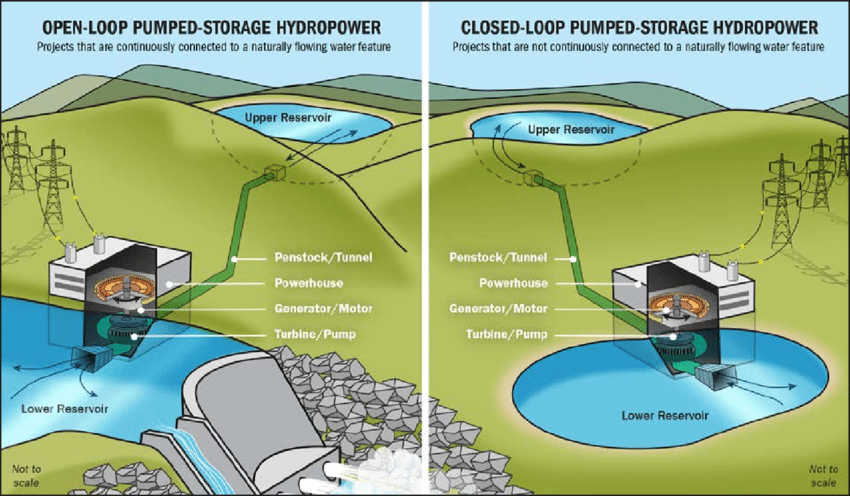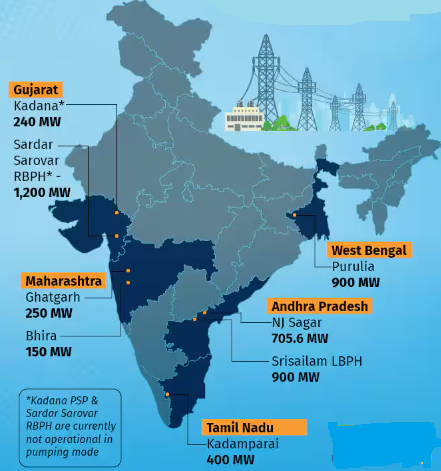7667766266
enquiry@shankarias.in
Union Budget 2024-25 stated that a policy for promoting pumped storage projects will be brought out for electricity storage.

|
No |
Plant |
State |
|
1 |
Nagarjuna Sagar |
Telangana |
|
2 |
Srisailam LBPH |
|
|
3 |
Kadamparai |
Tamil Nadu |
|
4 |
Bhira |
Maharashtra |
|
5 |
Ghatgar |
|
|
6 |
Purulia |
West Bengal |
|
7 |
Kadana |
Gujarat |
|
8 |
Sardar Sarovar Project |

China leads the world with 44 GW of pumped storage supporting 1,300 GW of wind and solar followed by Japan and USA.